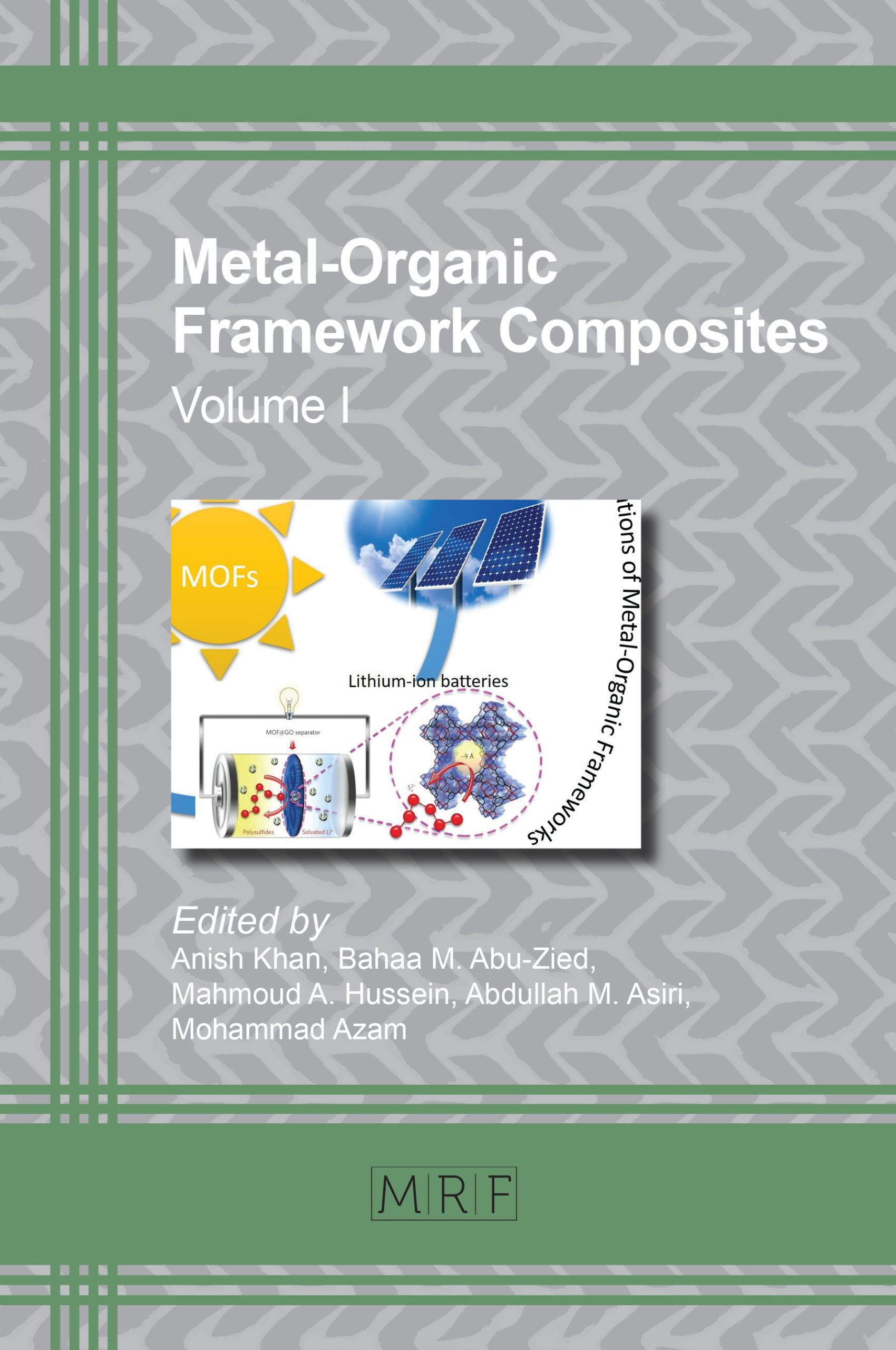Condensation of WO42- Polyhedra Units on Layered Rare Earth Hydroxides Nanosheets: Hierarchical Channels and Heavy Metal Adsorption
Solomon Omwoma
Porous materials exhibit advantages in adsorption applications due to their ability to increase accessibility, surface area and enhanced liquid/molecular/ion transport. Condensation of WO42- polyhedra units on delaminated europium containing layered rare earth hydroxide nanosheets, [Eu8(OH)20(H2O)n]4+, at pH 5 under nitrogen environment is herein reported to form a porous material with hierarchical channels characterized as Eu2(OH)5[H2W12O40]0.17∙7H2O. Heavy metal adsorption by this material was found to be 1.8, 2.4 and 4.1mmol/g for Cd2+, Pb2+ and Cr6+ within contact times of 18, 25 and 20 minutes respectively. The sorption mechanism was pseudo-second order and obeyed the Langmuir sorption model.
Keywords
Metal-Organic Frameworks, Layered Rare Earth Hydroxides, Heavy Metals, Adsorption
Published online 6/30/2019, 18 pages
Citation: Solomon Omwoma, Condensation of WO42- Polyhedra Units on Layered Rare Earth Hydroxides Nanosheets: Hierarchical Channels and Heavy Metal Adsorption, Materials Research Foundations, Vol. 53, pp 122-139, 2019
DOI: https://doi.org/10.21741/9781644900291-6
Part of the book on Metal-Organic Framework Composites
References
[1] L. Hou, D. Wang, A. Baccarelli, Environmental chemicals and microRNAs, Mutat. Res. 714 (2011) 105– 112.
[2] T.A. Kurniawan, G.Y. Chan, W.H. Lo, S. Babel, Comparisons of low-cost adsorbents for treating wastewaters laden with heavy metals, The Science of the total environment 366 (2006) 409-426. https://doi.org/10.1016/j.scitotenv.2005.10.001
[3] L. Jarup, Hazards of heavy metal contamination, Brit. Med. Bull. 68 (2003) 167-182.
[4] S. Babel, T.A. Kurniawan, Low-cost adsorbents for heavy metals uptake from contaminated water: a review, J. Hazard. Mater. 97 (2003) 219-243. https://doi.org/10.1016/s0304-3894(02)00263-7
[5] S.E. Bailey, T.J. Olin, R.M. Bricka, D.D. Adrian, A review of potentially low-cost sorbents for heavy metals, Wat. Res. 33 (1999) 2469-2479. https://doi.org/10.1016/s0043-1354(98)00475-8
[6] W.S. Wan Ngah, M.A. Hanafiah, Removal of heavy metal ions from wastewater by chemically modified plant wastes as adsorbents: a review, Bioresource technology 99 (2008) 3935-3948. https://doi.org/10.1016/j.biortech.2007.06.011
[7] H. Marsh, F.R. Reinoso, Activated Carbon, Technology & Engineering , Elsevier, Britain, 2006.
[8] S. Miyata, Anion-Exchanged Properties of Hydrotalcite-like Compounds, Clay Clay Miner. 31 (1983) 305-311. https://doi.org/10.1346/ccmn.1983.0310409
[9] S. Omwoma, W. Chen, R. Tsunashima, Y.-F. Songa, Recent advances on polyoxometalates intercalated layered double hydroxides: From synthetic approaches to functional material applications, Coord. Chem. Rev. 258-259 (2014) 58-71. https://doi.org/10.1016/j.ccr.2013.08.039
[10] B. Sels, D. De Vos, M. Buntinx, F. Pierard, A.K.-D. Mesmaeker, P. Jacobs, Layered double hydroxides exchangedwith tungstate as biomimetic catalysts for mild oxidative bromination, Nature 400 (1999) 855-857. https://doi.org/10.1038/23674
[11] M.T. Pope, A. Müller, Polyoxometalate Chemistry: An Old Field with New Dimensions in Several Disciplines, Angew. Chem. Int. Ed. Engl. 30 (1991) 34-48. https://doi.org/10.1002/anie.199100341
[12] H. Jeong, B.I. Lee, S.H. Byeon, Directional self-assembly of rare-earth hydroxocation nanosheets and paradodecatungstate anions, Dalton transactions 41 (2012) 14055-14058. https://doi.org/10.1039/c2dt32421k
[13] J.B. Christian, M.S. Whittingham, Structural study of ammonium metatungstate, J. Solid State Chem. 181 (2008) 1782– 1791. https://doi.org/10.1016/j.jssc.2008.03.034
[14] F. Geng, H. Xin, Y. Matsushita, R. Ma, M. Tanaka, F. Izumi, N. Iyi, T. Sasaki, New Layered Rare-Earth Hydroxides with Anion-Exchange Properties, Chem. Eur. J. 14 (2008) 9255-9260. https://doi.org/10.1002/chem.200800127
[15] F. Geng, Y. Matsushita, R. Ma, H. Xin, M. Tanaka, F. Izumi, N. Iyi, T. Sasaki, General Synthesis and Structural Evolution of a Layered Family of Ln8(OH)20Cl4 ·nH2O (Ln ) Nd, Sm, Eu, Gd, Tb, Dy, Ho, Er, Tm, and Y), J. AM. CHEM 130 (2008) 16344–16350. https://doi.org/10.1021/ja807050e
[16] M. Del-Arco, D. Carriazo, S. Gutie´rrez, C. Martı´n, V. Rives, Synthesis and Characterization of New Mg2Al-Paratungstate Layered Double Hydroxides, Inorg. Chem. 43 (2004) 375-384. https://doi.org/10.1021/ic0347790
[17] S. Kyeong, P.T. J., Layered Double Hydroxides Intercalated by Polyoxometalate Anions with Keggin (A-H2W12O406-), Dawson (A-P2W12O626-), and Finke (Co4(H2O)2(PW9O34)210- Structures, Inorg. Chem. 35 (1996) 6853-6860. https://doi.org/10.1021/ic960287u
[18] M. Kobya, Removal of Cr(VI) from aqueous solutions by adsorption onto hazelnut shell activated carbon: kinetic and equilibrium studies, Bioresource technology 91 (2004) 317-321. https://doi.org/10.1016/j.biortech.2003.07.001
[19] S. Babel, T.A. Kurniawan, Cr(VI) removal from synthetic wastewater using coconut shell charcoal and commercial activated carbon modified with oxidizing agents and/or chitosan, Chemosphere 54 (2004) 951-967. https://doi.org/10.1016/j.chemosphere.2003.10.001
[20] K. Selvi, Removal of Cr(VI) from aqueous solution by adsorption onto activated carbon, Bioresource technology 80 (2001) 87-89. https://doi.org/10.1016/s0960-8524(01)00068-2
[21] D. Feng, J.S.J. van Deventer, C. Aldrich, Removal of pollutants from acid mine wastewater using metallurgical by-product slags, Sep. Purif. Technol. 40 (2004) 61-67. https://doi.org/10.1016/j.seppur.2004.01.003
[22] M. Sekar, V. Sakthi, S. Rengaraj, Kinetics and equilibrium adsorption study of lead(II) onto activated carbon prepared from coconut shell, J. Colloid Interface Sci. 279 (2004) 307-313. https://doi.org/10.1016/j.jcis.2004.06.042
[23] J.R. Rangel-Mendez, M. Streat, Adsorption of cadmium by activated carbon cloth: influence of surface oxidation and solution pH, Wat. Res. 36 (2002) 1244-1252. https://doi.org/10.1016/s0043-1354(01)00343-8
[24] B.S. Inbaraj, N. Sulochana, Carbonised jackfruit peel as an adsorbent for the removal of Cd(II) from aqueous solution, Bioresource technology 94 (2004) 49-52. https://doi.org/10.1016/j.biortech.2003.11.018
[25] K.A. Krishnan, T.S. Anirudhan, Removal of cadmium(II) from aqueous solutions by steam-activated sulphurised carbon prepared from sugar-cane bagasse pith: kinetics and equilibrium studies, Water SA 29 (2003). https://doi.org/10.4314/wsa.v29i2.4849
[26] K.S.W. Sing, D.H. Everett, R.A.W. Haul, L. Moscou, R.A. Pierotti, J. Rouquero, T. Siemieniewska, Reporting Physisorption Data for Gas Solid Systems with Special Reference to the Determination of Surface Area and Porosity, Pure & Appl. Chem 57 (1985) 603—619. https://doi.org/10.1515/iupac.57.0013













